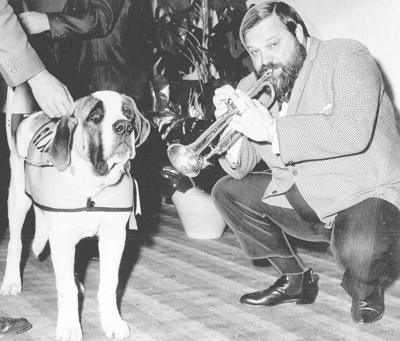This week we celebrate the 100th anniversary of the birth of Grammy-winning musician Al Hirt, the New Orleans-born trumpeter and bandleader nicknamed “Jumbo” who was known both for his size and his enormous talent.
Alois Maxwell Hirt Jr. was born in New Orleans on Nov. 7, 1922. His father, a New Orleans police officer, purchased a trumpet at a pawn shop and gave it to Hirt when he was 6 years old. He played his first professional gig at age 16 as a bugler at the Fair Grounds.
Hirt attended Jesuit and Fortier high schools and in 1940 won a scholarship to the Cincinnati Conservatory of Music, where he studied classical music but joined jam sessions on the weekends, honing an interest in jazz.
Hirt served in the U.S. Army Air Corps during World War II as a member of the 82nd Army Air Force Band and bugler. After the war, he played with the big bands of the era including Benny Goodman, Tommy and Jimmy Dorsey and Horace Heidt. He was also a member of WWL Radio’s popular Dawnbusters morning show orchestra. In 1950, Hirt recorded the first of his 55 albums (four of which went gold). He would earn 21 Grammy nominations, winning the Grammy in 1964 for his version of “Java,” written by Allen Toussaint.
His bearded face was a fixture on television and on tour. He operated a nightclub on Bourbon Street from 1961 to 1983 where Ellis Marsalis Jr. was the house pianist. Hirt gave Marsalis’ son Wynton his first trumpet.
Hirt performed at the first New Orleans Jazz & Heritage Festival in 1970, and he was honored on the fest’s 2000 poster by artist George Rodrigue. He also played the first Super Bowl halftime show in 1967, was an original investor in the New Orleans Saints and musical director in the team’s early years.
During his career, Hirt performed for six U.S. presidents and Pope John Paul II during his 1987 visit to New Orleans. He died in 1999.
The short Uptown street only has a handful of houses and one apartment building.



